
Desmarestia viridis
Stringy Acid Kelp, Stringy Acid Weed, Desmarest’s Green Weed
12 April 2024
Point Holmes, Strait of Georgia, B.C., Canada
Tide: 1.7 feet at 15:15 PDT (measured at Little River Tidal Station)
Weather: Mainly clear (5% cloud cover), wind North 15 km/hour, sea rippled, humidity 60%, 11 ˚C.
Moon: Waxing Crescent (22.2%, 4 days); Next Phase, First Quarter, 15 April 2024 at 12:13 pm PDT; Previous Phase, New Moon, 8 April 2024 at 11:20 am PDT.
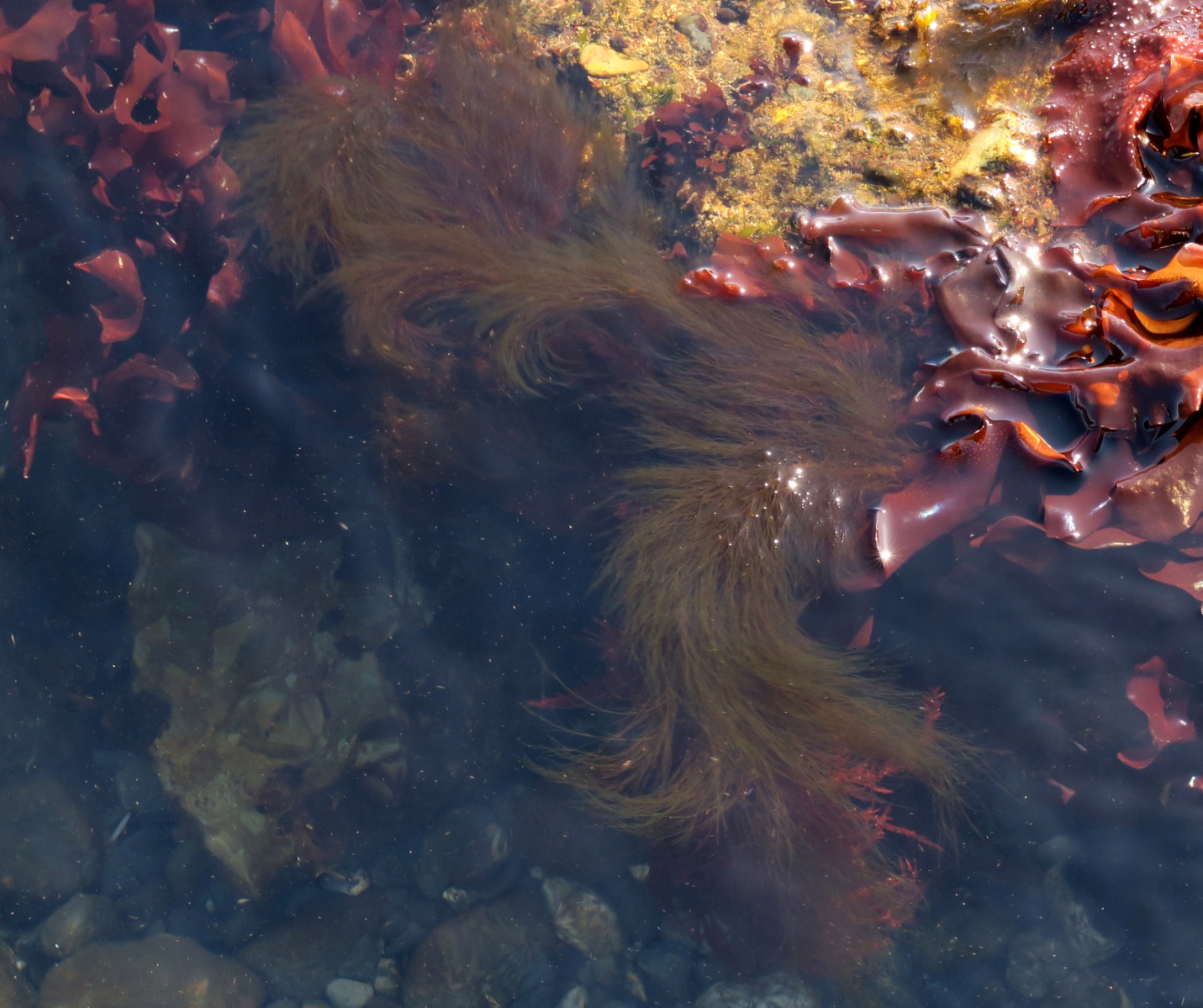
Figure 1: A fox’s tail...? A horse’s long mane...? Actually, it is Desmarestia viridis in action with the ocean swell. This seaweed’s undulations were graceful, attractive and eye catching. Point Holmes, Strait of Georgia, B.C., Canada. April 12, 2024. Photo ID 27649 ©Seaweedwhisperings.com
Person 1:
Gentle green.
Waving in the water like a long horse’s mane.
Gentle, graceful movement thorough the water – moves in an orderly fashion through the water oblivious to what’s beneath.
Balanced in motion, balanced and untroubled in its being.
Opposite branching – can see and understand opposing views.
At rest, when exposed at low tide, Desmarestia viridis flops down on the substrate, hoping that nourishing seawater will soon return.
I watched an individual D. viridis as it slowly became re-immersed with the rising tide; surprisingly it showed no apparent response.
Strong, central axis is firmly attached to the substrate. This strength is in contrast to the delicate overall appearance of the thallus.
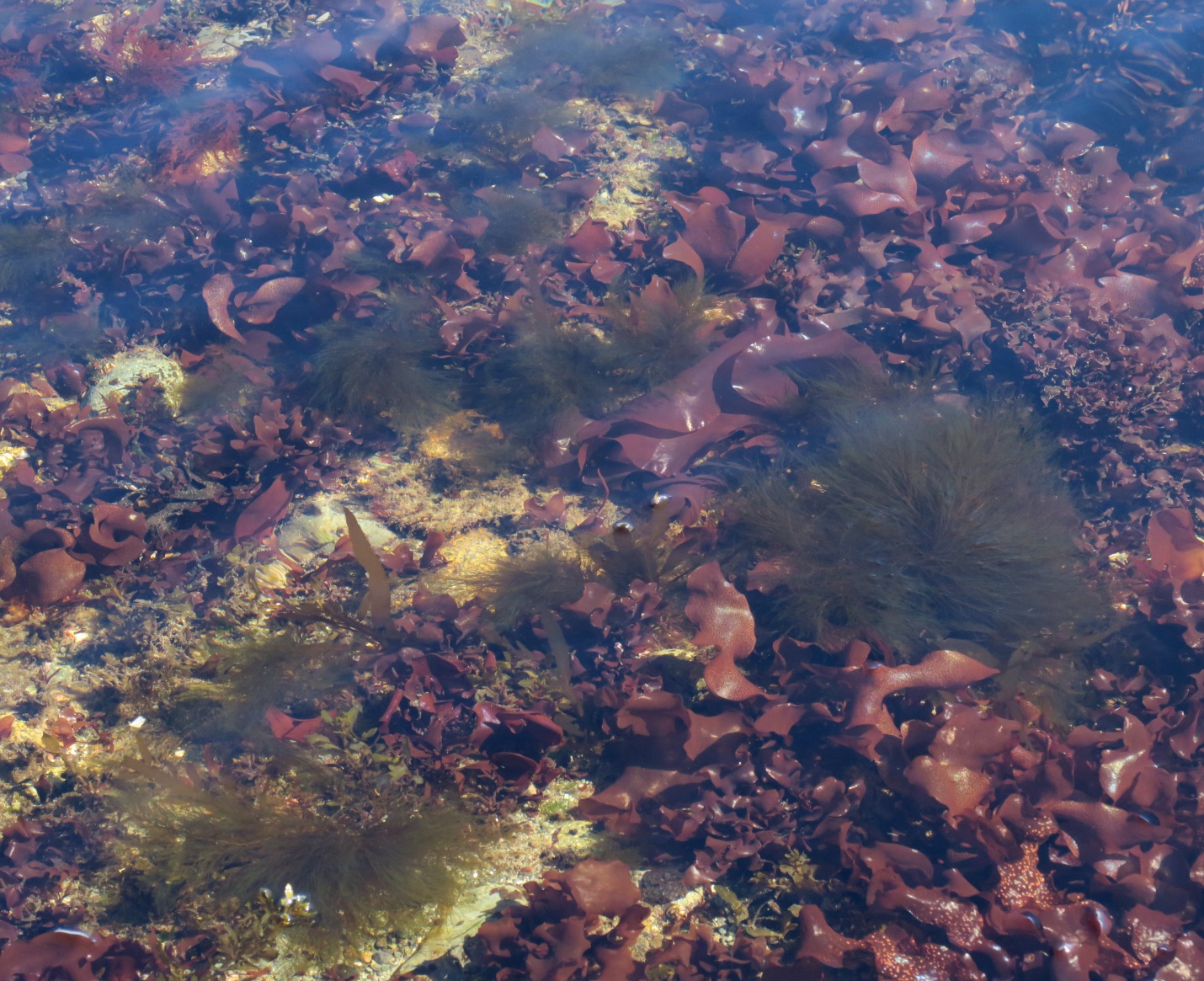
Figure 2: There are several Desmarestia viridis individuals pictured here. The tide is very low this day and so they are seen through only a shallow layer of water. This ‘brown’ alga is tinted with green and this color shows up in notable ways at various stages of its life. Point Holmes, Strait of Georgia, B.C., Canada. April 12, 2024. Photo ID 27650 ©Seaweedwhisperings.com
Person 2:
Submerged and growing from the edge of a rock outcrop, groupings of silken looking fine threads move with the lapping water as a fox might gently swish its tail. It catches the eye, this movement!
Color is light brown, with a notable hint of green.
Main axis of the thallus is considerably larger in diameter than the multiple long, slender branchlets.
In water you are sleek and graceful as you are constantly wafting in lovely arcs, back and forth, back and forth, from your holdfast.
On rocks only a bit higher in the intertidal zone Desmarestia viridis is exposed to air and wind. Here this seaweed is flattened to the substrate and surrounding seaweeds almost as if it is melted there, and its color looks like a pasty, sickly, mucky green. This is you when you are distressed, Desmarestia. It shows so plainly to me – your distress, as if all your vitality has bled from your branches and as if you are already in the process of decomposition and decay.
Such a fine line.
Such a sudden decline.
Sleek and graceful at one place and time – muck and decay at a nearby place at the same time.
I wonder if these “exposed” individuals will recover when the tide returns. Perhaps they will, but I feel doubtful as I write this sentence.
Maybe Desmarestia viridis has no way to hide their displeasure or distress. This would be consistent with how they also can’t hide their sleek and graceful undulations in the water – opposite circumstances are both equally on display.
Out of water and exposed I was curious to touch this seaweed – so strong was the sense of “muck and decay” that I wanted to see if it felt like it was melting and decomposing, or if somehow it still felt vital and strong. I found that it felt very satiny to the touch. My fingers were able to glide over the branches almost as if they were greased – but there is no grease on the surface of these branchlets, not that I can detect. But Desmarestia also has nothing that creates traction or friction or that is in any way trying to hold or slow my touch as it moves over the slender recumbent blades. Maybe this is precisely how you like it – a soft touch is acceptable, but nothing more. Any other kind of physical encounter is simply too much for you; you want things to slip on past you, and you want to slip on past other things. You want to encounter no bumps or collisions and you have no desire to sustain any lingering brushes or grazes either.
The tide has been encroaching and I was able to observe that indeed those individuals that have been exposed and stressed and discolored, they look as if they will indeed NOT regain their “alive” coloration. It feels like this wound they have recently suffered is too great to survive.
My camera battery has just now “died” and I took a moment to replace it; I note that Person 1 had also just replaced his camera battery with a fresh spare a few minutes earlier. This coincidence of “loss of power” seemed to parallel the state of Desmarestia viridis – it appears that when its “energy” gets drained, it really gets totally drained. No recovery is possible. All that remains is the hope that the makings of a new generation will have already been sown, or perhaps that a new season will permit fresh growth. Then once again they will enjoy their time of vitality.
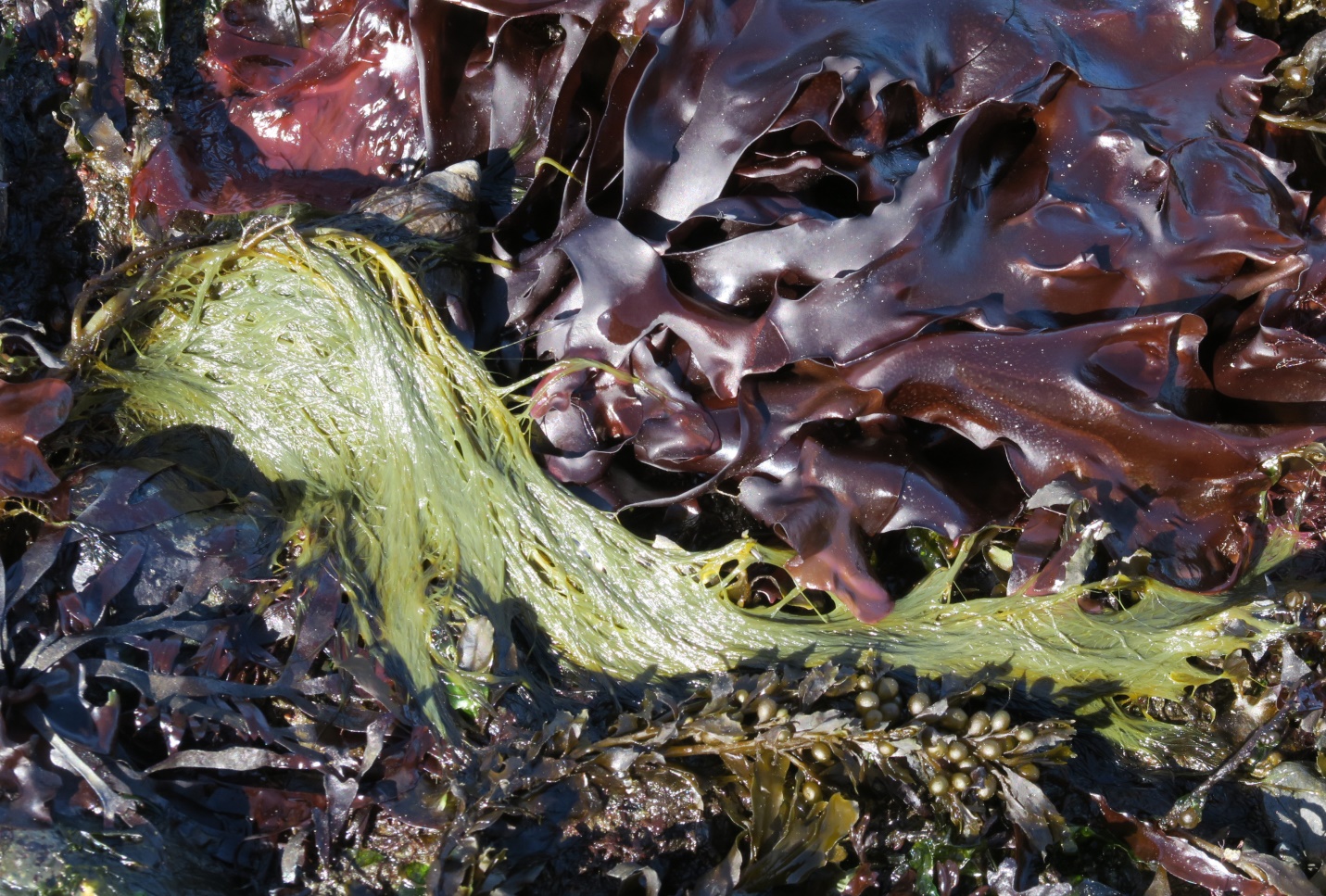
Figure 3: Splayed out and almost ‘melted’ looking, there were numerous smaller Desmarestia viridis seaweeds in this condition today. Point Holmes, Strait of Georgia, B.C., Canada. April 12, 2024. Photo ID 27651 ©Seaweedwhisperings.com
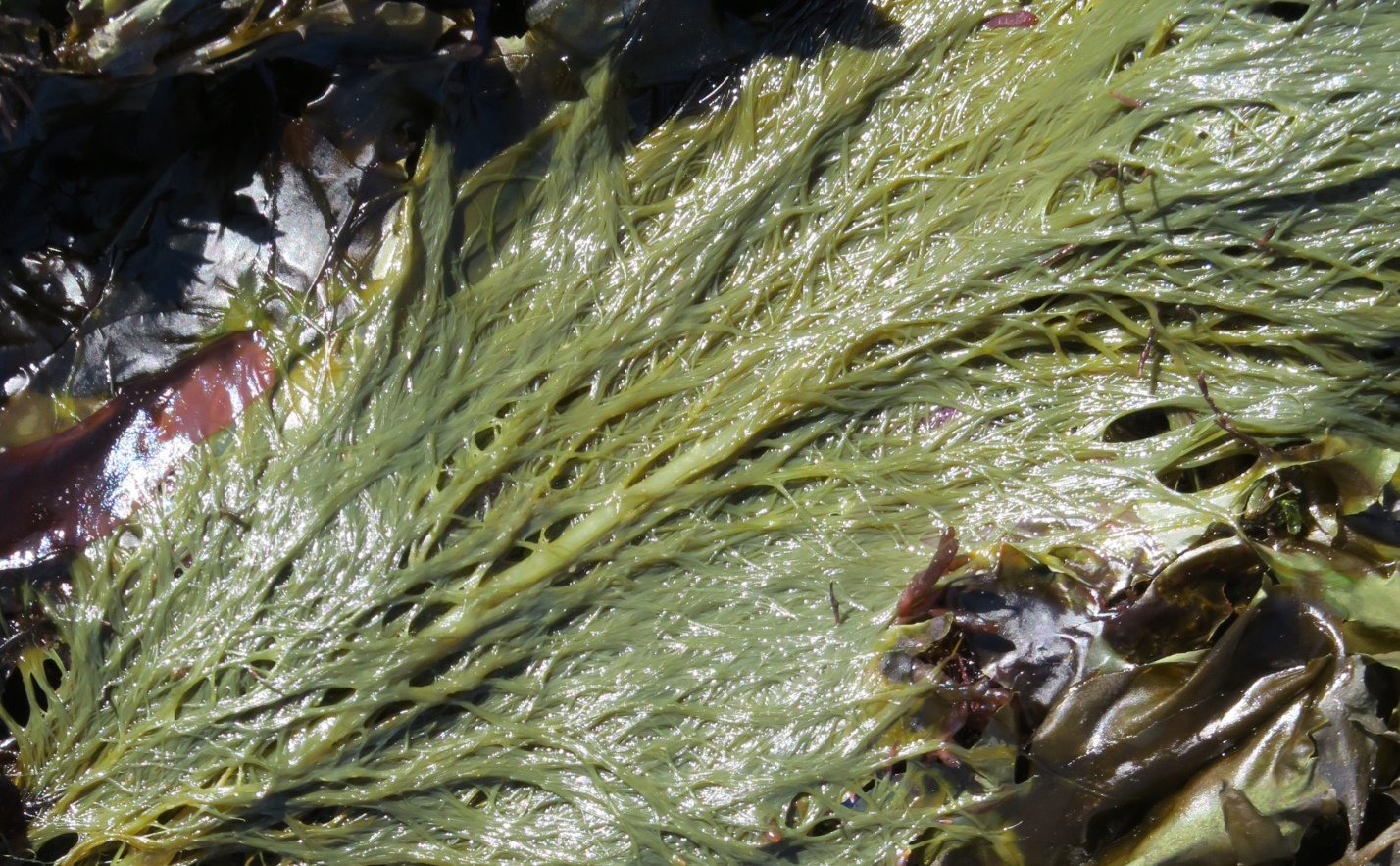
Figure 4: A closer view of the ‘air-damaged’ D. viridis; the sulfuric acid contained in its vacuoles has been released and decomposition has begun. Photo ID 27652 ©Seaweedwhisperings.com
Discussion:
Location really matters. This seaweed is doing fine at deeper tide levels, but at the low intertidal zone, a region that has been exposed now for three consecutive days of spring low tides, those Desmarestia viridis individuals that chose to grow here are struggling. So at the same point in time, with the same hours of sunlight accompanying the expanding days of the season, those individuals that risked life in the shallower waters are having their existence cut short. Their demise came early, or so it seems, and it feels that it also was sudden – a miscalculation of location that came with an abrupt and very high cost. Somehow, too, it seems that Desmarestia didn’t anticipate their impending doom and therefore had wasted no time or energy with worry or concern in this regard. It is like one moment it is vital and alive, and then at the next moment, they are not.
Submerged and in calm or deeper waters, Desmarestia viridis spreads out its fine branches in a “cloud” above its holdfast. It feels as if they “shade” the shorter seaweeds around them. While this shading doesn’t really block all that much light and it felt somewhat irritating to some of the ‘reds’, the neighboring seaweeds mostly do not give D. viridis much attention. Desmarestia would like more interaction, though, but doesn’t quite know how to manage that. There’s something within them that wants to attract some interaction and then that same desire is matched with something else within them that is fearful enough to have them stop short of truly engaging. To others, this can be tiresome and annoying; there can be a feeling of being trifled with that leaves a sour taste. For Desmarestia this is them considering how to go about their relationships.
It seems that this seaweed doesn’t have much “staying power”, at least that is true with certain of its traits. They can come across with confidence, but this is expressed only in short bursts that seem to be quickly shot back down to size. Almost as if confidence, daring, boldness and grit are being tested out by Desmarestia as a way of being they’d like to embody but can’t yet sustain.
They do have strength, although it is the kind that does not show up in the short term. It is the kind of strength that returns after a time of licking one’s wounds and regrouping for another try. In the seaweed, we feel that this is reflected by its perennial nature. If growth comes early in the spring and reaches its peak soon or even seemingly too soon..., well, there is always next year!
Desmarestia viridis in its overall action keeps trying, but progress is by short bursts, and may at times seem to be the embodiment of the “two steps forward and one step back” adage. They consider and even try out various viewpoints, even opposing ones. This can be the best way for them to learn – by experience of trial and error, however this does come with some of those dreaded collisions, conflicts and dead ends. There are many who do not suffer so badly when they experience a collision and the consequent bruise, however Desmarestia really does suffer if damaged. So, its self-protection needs to be that of being somewhat short-focused, slick, slippery or even evasive. As mentioned above, others can tire of this in a Desmarestia individual as they can come across as unreliable or inconsistent, but for Desmarestia viridis it is a matter of survival that they keep to that type of behavior – indeed, everybody nearby suffers if Desmarestia is hurt or damaged.
When balanced and healthy, this seaweed is untroubled and very much alive in the present time. It lives with the awareness that its neighbors don’t fully embrace it – that slight wariness and irritation others feel is registered by Desmarestia, but Desmarestia also seems to not to worry overmuch about their conditional acceptance. Perhaps they are aware that if they become too close to another, ultimately this could harm that other. Certainly some of its survival needs really do limit D. viridis’s behaviors, and yet this is true of other seaweeds, too. What is different in this seaweed is that when it suffers, the suffering gets shared. A damaged Desmarestia viridis, self-destructing after trauma, will also affect damage to surrounding innocents. Desmarestia doesn’t at this point have enough vitality for us to see that this is in any way an act of their own volition; it is not a type of vengeance or maliciousness. Such intentions are absent from the picture and what is much more present is a type of obliviousness to consequences, to the destruction that may be coming. So it is interesting to contemplate that those who are not irritated enough by the presence of Desmarestia in their neighborhood to try to distance or protect themselves adequately..., well, they may find their own corporeal being is eventually harmed as a result of their tolerance. Is there an advantage to all this? The quick decomposition of once vital life forms? A decomposition that spreads? This is a question that Desmarestia viridis challenges us to contemplate.
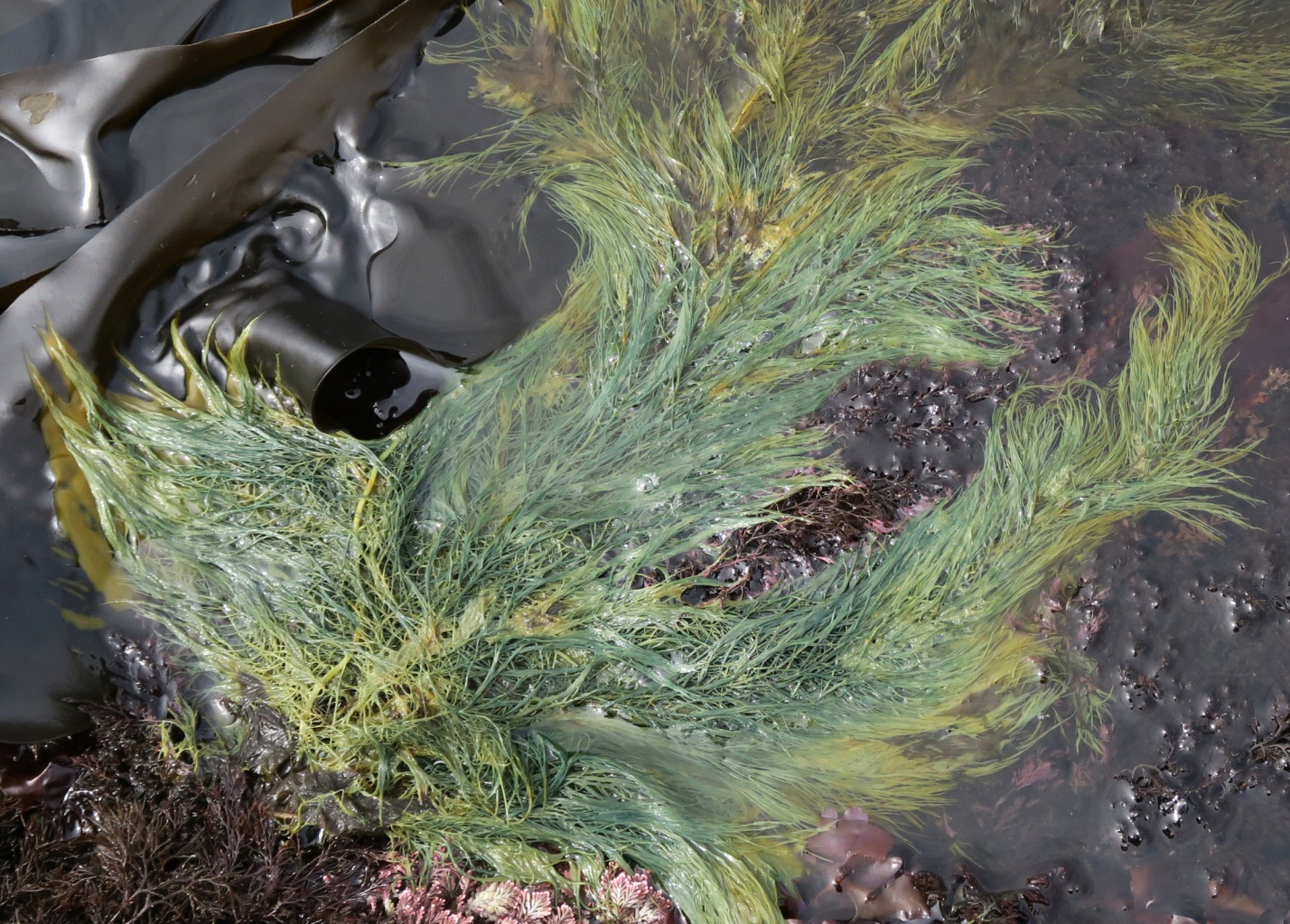
Figure 5: This picture depicts a Desmarestia viridis individual that has been stressed by exposure to air and has released sulfuric acid from within its own cells. This potent acid harms both D. viridis itself and the adjacent seaweeds; evidence of this can be seen where discoloration is strong. On the large kelp blade at the left, the kelp has been affected and those areas are now mustard yellow rather than a deep brown color. Some of the Odonthalia floccosa, which is normally a deep burgundy red, is also affected and has turned a pinkish color as it decomposes as a result of proximity to the acid. Desmarestia viridis itself is decomposing, and it is no longer a healthy brown tinged with green, nor even its first slide into pasty dull green, but in many places it has turned a mustard yellowish color, too. Gonzales Bay, Juan de Fuca Strait, B.C., Canada. April 28, 2021. Photo ID 27653 ©Seaweedwhisperings.com
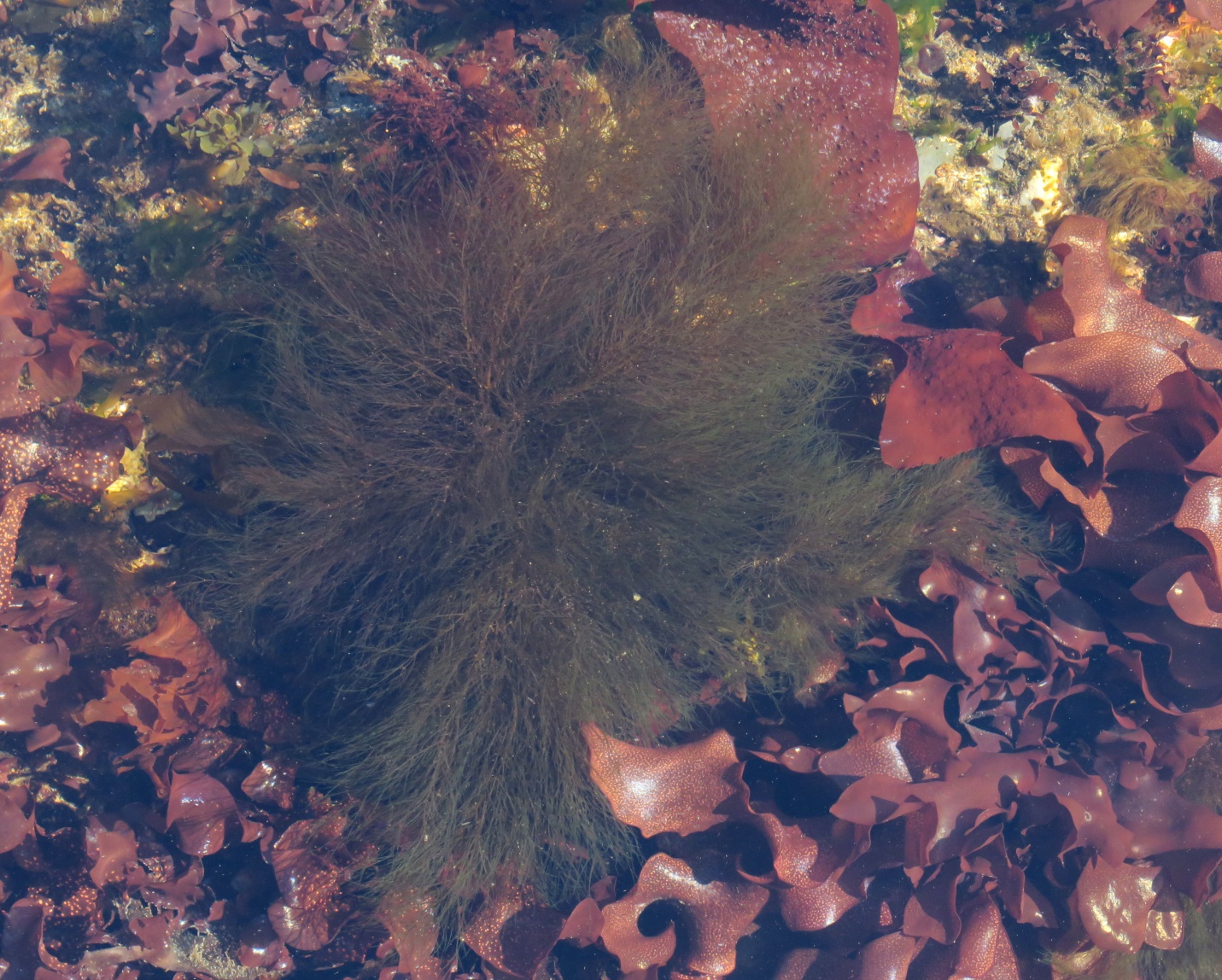
Figure 6: A vivid contrast to the specimen in Figure 5, this photo depicts a happily immersed and healthy individual. Point Holmes, Strait of Georgia, B.C., Canada. April 12, 2024. Photo ID 27654 ©Seaweedwhisperings.com
Biology & Natural History Information:
Description:
Stringy Acid Kelp is a highly branched perennial brown algae. The light brown thallus has a cylindrical central axis, with side branches coming off the main axis in mainly opposite pairs; this pattern is repeated over multiple orders of branching. Lower parts of the seaweed are somewhat cartilaginous in texture but the main proliferations of branches are lax and fragile. Arising from a discoid holdfast this seaweed grows up to 120 cm (48 in) tall and has an overall bushy appearance in water. This species is considered to be the most acidic of all the acid kelps with a vacuolar pH of about 1. It releases sulfuric acid when it gets damaged or dried out, destroying itself and other seaweeds. The release of acid causes it to turn a dull green indicating the process of disintegration is under way.
Habitat:
This perennial is found on rock in the very low intertidal zones and in the subtidal to depths of 45 meters. It prefers semi-protected to exposed habitats.
Distribution:
Desmarestia viridis is found on both sides of the north Pacific – from Korea, Japan and China north to the Bering Sea, Aleutian Islands, and Arctic Ocean; and from Alaska down along the coast of British Columbia, Oregon, Washington, California to Baja California, Mexico. It is also found in the North Atlantic, the North Sea, and off the coasts of New Zealand, Chile, Argentina and the Antarctic and nearby islands.
Remarks:
The genus Desmarestia is named for a French phycologist, A.G. Desmarest. The species name is from the Latin for green.
Classification:
Phylum: Heterokontophyta
Subphylum: Ochrophytina
Class: Phaeophyceae
Subclass: Fucophycidae
Order: Desmarestiales
Family: Desmarestiaceae
Genus: Desmarestia
Species: Desmarestia viridis (O.F.Müller) J.V.Lamouroux 1813
Former name(s):
Fucus viridis O.F.Müller 1782; Desmarestia media var. tenuis Setchell & N.L.Gardner 1924.

Figure 7: This thallus of Desmarestia viridis has likely just been cast ashore, as it retains its “brown” coloration and has not yet started to “self-destruct” via release of sulfuric acid from its own cells. Kye Bay, Strait of Georgia, B.C., Canada. April 10, 2024. Photo ID 27664 ©Seaweedwhisperings.com
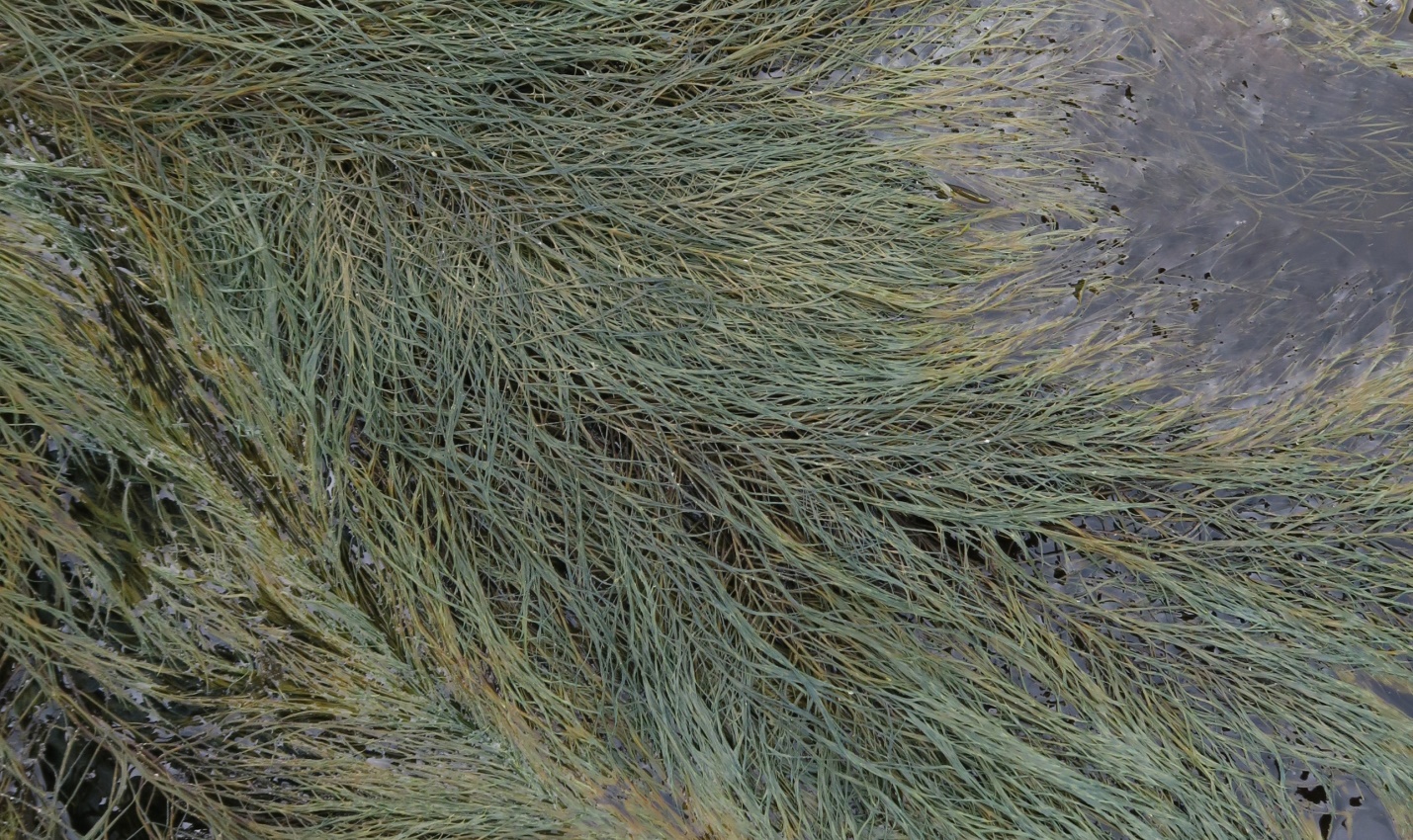
Figure 8: The opposite branching pattern that differentiates this from another acid weed species can be discerned in this image. compared to Figure 7, this individual is now showing the effects of the acid release on its own tissues. Gonzales Bay, Juan de Fuca Strait, B.C., Canada. April 28, 2021. Photo ID 27655 ©Seaweedwhisperings.com
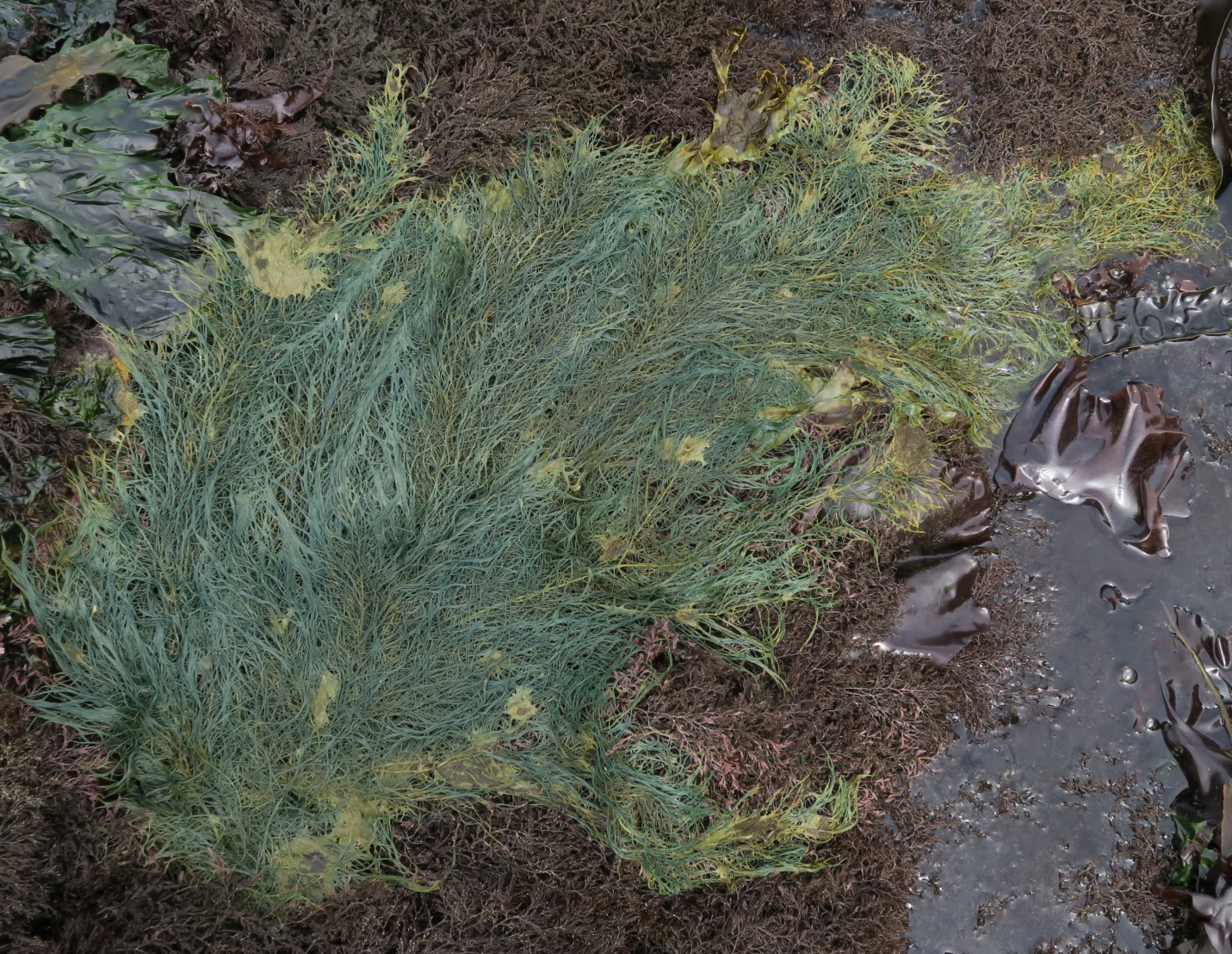
Figure 9: “Dramatic in death!” could certainly be the caption for this seaweed. This photo depicts yet another example of a larger damaged specimen that has discolored to flat green and is decaying further in the dirty mustard colored areas. April 28, 2021. Gonzales Bay, Juan de Fuca Strait, B.C., Canada. Photo ID 27656 ©Seaweedwhisperings.com
![]()